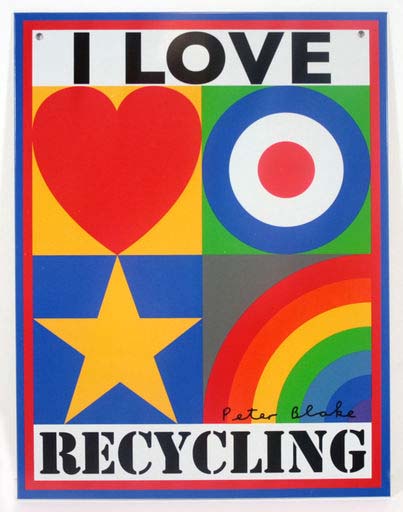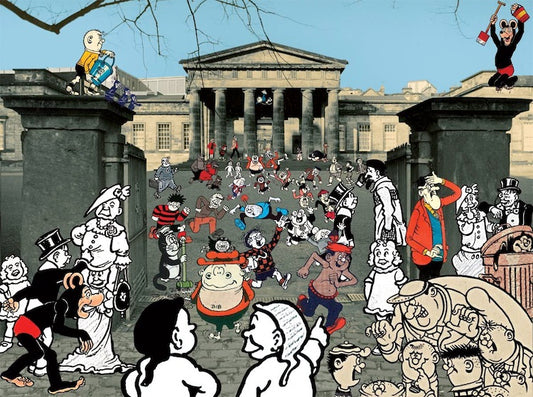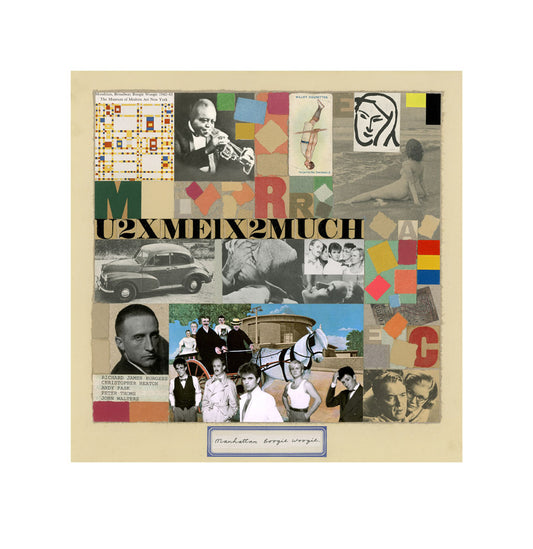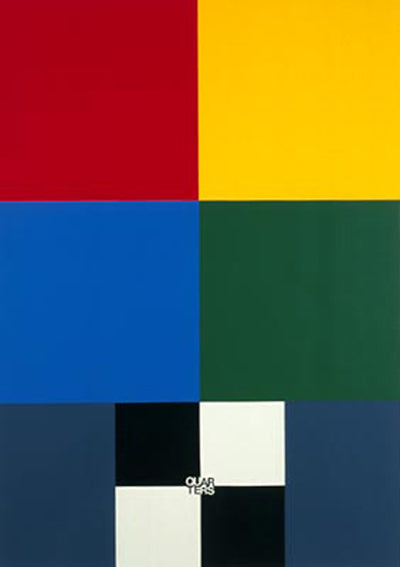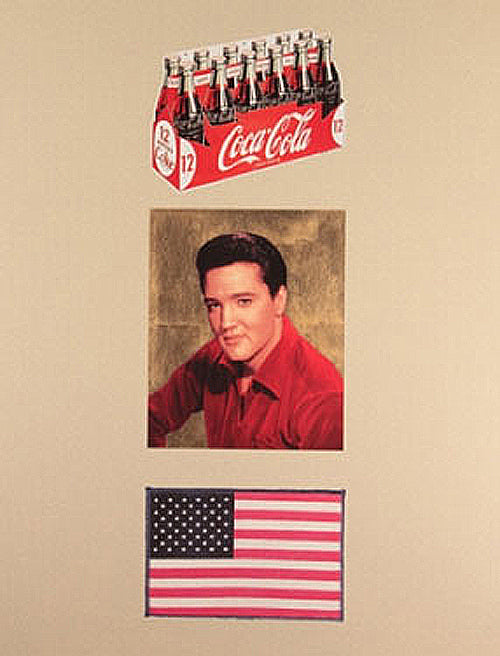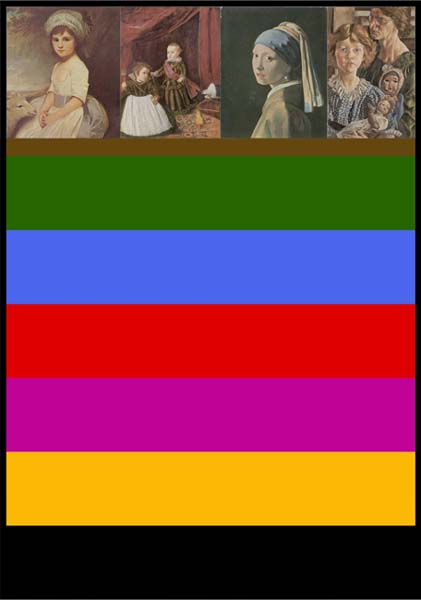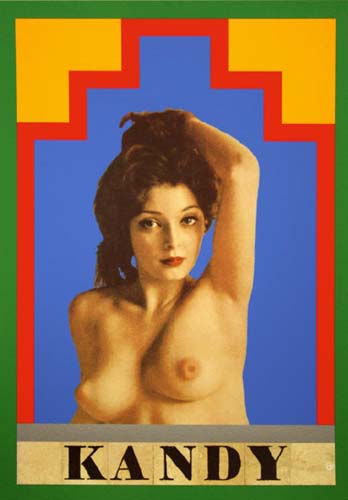Collection: Sir Peter Blake
Limited edition silkscreen prints by the 'Godfather of British Pop Art'. Many of these are selling out fast. Exuberant works of art with excellent investment potential.
Please note that price levels increase without notice as each image approaches the end of its edition and stock becomes low. We offer the most competitive prices on all Peter Blake prints, whether or not listed below, combined with excellent customer service. Please call or email Julian Thomas for details.
Stop Press: Peter Blake voted 8th on the list of most influential British artists of all time!
Recommended framing is in a 40mm white gesso square section shallow box frame with spacers. Please get in touch for a framing quote.
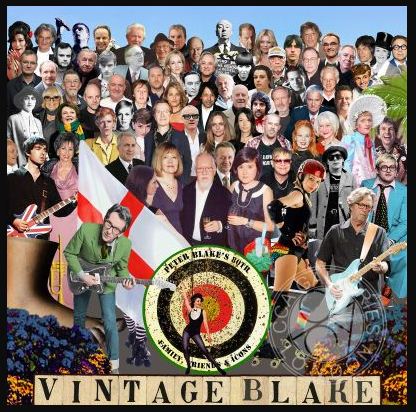
Collapsible content
More on Sir Peter Blake
Sir Peter Blake won international fame in the 1960's as one of the leading exponents of the British Pop Art movement. His work is represented in major collections throughout the world.
His images are born from a love affair with the icons and ephemera of popular culture and his influence on the music world can be summarised by the seminal cover art for the Beatle's 'Sargeant Pepper' album.
Born in 1932 in Dartford England. From 1946 to 1951 he studied at Gravesend Technical College and School of Art and he graduated from the Royal College of Art in 1956. From 1951 to 1953 he served in the Royal Air Force. He studied Folk Art in various European countries with a research award. During the late 1950s, Blake became one of the best known British pop artists. His paintings from this time included imagery from advertisements, music hall entertainment, and wrestlers, often including collaged elements. Blake was included in group exhibitions at the Institute of Contemporary Arts and had his first solo exhibition in 1960. It was with the 'Young Contemporaries' exhibition of 1961 where he was exhibited alongside David Hockney and R.B. Kitaj that he was first identified with the emerging British Pop Art movement.
Blake won the (1961) John Moores junior award for his work Self Portrait with Badges. He first came to wider public attention when, along with Pauline Boty, Derek Boshier and Peter Phillips, he featured in Ken Russell's film on pop art, Pop Goes the Easel, which was broadcast on BBC television in 1962. From 1963 Blake was represented by Robert Fraser which placed him at the centre of swinging London and brought him into contact with leading figures of popular culture. From 1959 he did collages with pin-up photos star images posters LP covers and other images. Between 1960 and 1962 he taught at St. Martin's School of Art London and from 1962 to 1964 at the Walthamstow School of Art. In 1961 he obtained First Prize in the John Moore Exhibition Liverpool for Self-portrait with Badges. In 1963 he married Jann Haworth and travelled to Los Angeles to do drawings for the Sunday Times. From 1974 to 1976 he taught at the Royal College of Art London. The City Art Gallery in Bristol gave him his first retrospective in 1969.
In 1973 and 1974 he had retrospectives in Amsterdam, Hamburg Brussels and Arnheim. In 1969 Blake became a 'Ruralist' and left the city to live in the countryside with his then wife the artist Jann Howarth eventually founding 'The Brotherhood of Ruralists' in 1975. He now works from his studio in Hammersmith London and maintains a prolific output of work.
In 2006, Blake designed the cover for Oasis greatest hits album Stop the Clocks. According to Blake, he chose all of the objects in the picture at random, but the sleeves of Sgt. Pepper's and Definitely Maybe were in the back of his mind. He claims, "It's using the mystery of Definitely Maybe and running away with it." Familiar cultural icons which can be seen on the cover include Dorothy from Wizard of Oz, Charles Manson (replacing the original image of Marilyn Monroe, which couldn't be used for legal reasons) and the seven dwarfs from Snow White And The Seven Dwarfs.
Blake created an updated version of Sgt. Pepper - with famous figures from Liverpool history - as part of the successful campaign for Liverpool to become European Capital of Culture 2008, and is creating a series of prints to celebrate Liverpool's status.
-
Sir Peter Blake - Got a Girl
Regular price From £3,200.00 GBPRegular priceUnit price / per -
Sir Peter Blake - I Love Recycling
Regular price £85.00 GBPRegular priceUnit price / per -
Sir Peter Blake - Marilyn
Regular price From £1,475.00 GBPRegular priceUnit price / per -
Sir Peter Blake - Vintage Blake
Regular price From £3,250.00 GBPRegular priceUnit price / per -
Sir Peter Blake - Wink
Regular price From £2,250.00 GBPRegular priceUnit price / per -
Peter Blake - 75 Years of the Beano
Regular price From £2,390.00 GBPRegular priceUnit price / per -
Peter Blake - Getting in over my head
Regular price £1,080.00 GBPRegular priceUnit price / per -
Sir Peter Blake - Manhattan Boogie Woogie
Regular price £1,080.00 GBPRegular priceUnit price / per -
Peter Blake - Matchboxes II
Regular price From £2,750.00 GBPRegular priceUnit price / per -
Peter Blake - Q is for Quarters
Regular price From £2,500.00 GBPRegular priceUnit price / per -
Peter Blake - I Love You - white
Regular price From £4,400.00 GBPRegular priceUnit price / per -
Peter Blake I Love You - black
Regular price From £4,400.00 GBPRegular priceUnit price / per -
Peter Blake I Love You - Set of four
Regular price £14,000.00 GBPRegular priceUnit price / per -
Peter Blake - American Trilogy (black and silver)
Regular price From £1,800.00 GBPRegular priceUnit price / per -
Peter Blake American Trilogy (cream and gold diamond dust)
Regular price From £2,750.00 GBPRegular priceUnit price / per -
Peter Blake American Trilogy (set of three)
Regular price £7,000.00 GBPRegular priceUnit price / per -
Sir Peter Blake - Fine Art Bits
Regular price From £1,600.00 GBPRegular priceUnit price / per -
Sir Peter Blake - Kandy
Regular price From £1,600.00 GBPRegular priceUnit price / per -
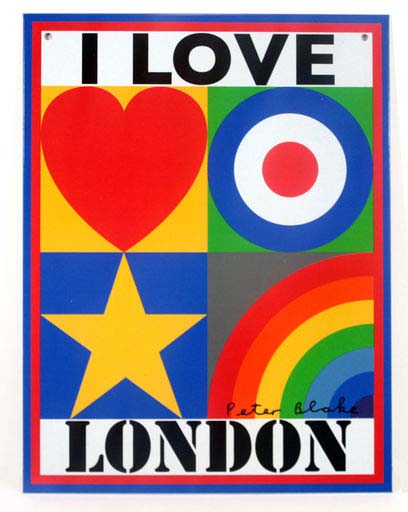 Sold out
Sold outSir Peter Blake - I Love London
Regular price £60.00 GBPRegular priceUnit price / per -
 Sold out
Sold outSir Peter Blake - I Love Vintage
Regular price £80.00 GBPRegular priceUnit price / per


